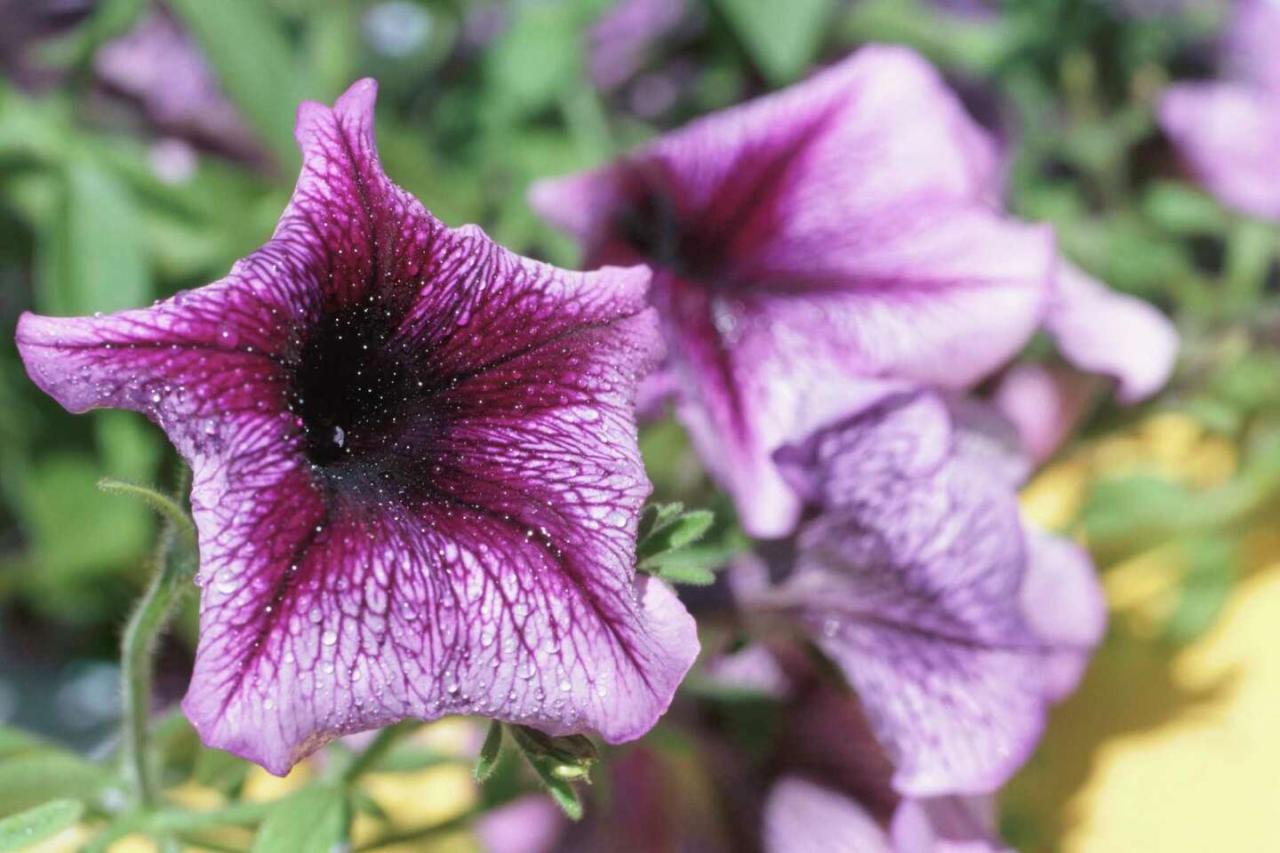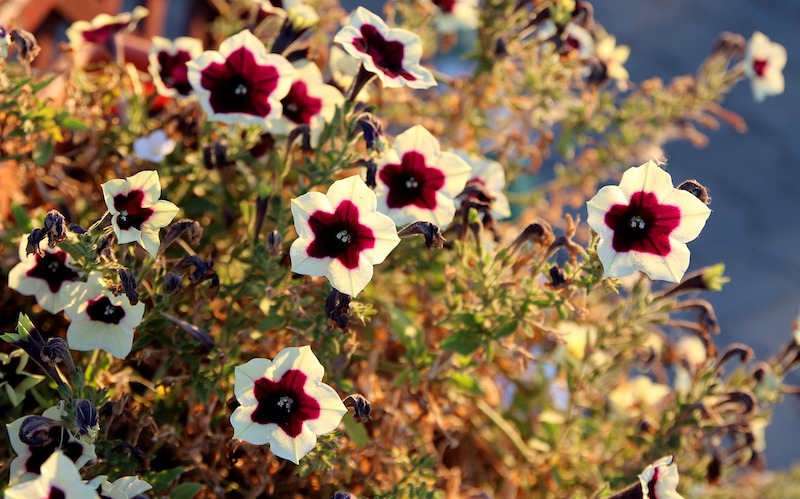Petunias are beloved flowers that grace many gardens with their vibrant colors and beautiful blooms. However, it’s disheartening when you notice your petunias turning brown. This condition can be caused by various factors, and understanding them is crucial for maintaining the health of your plants. In this comprehensive guide, we will explore the common reasons behind petunias turning brown and what you can do to revive their beauty.
Understanding Petunias
Before we dive into the causes of browning petunias, it’s essential to understand what petunias are and how to care for them effectively.
What Are Petunias?
Petunias belong to the Solanaceae family and are native to South America. They are popular for their ability to bloom throughout the summer and come in various colors, including purple, pink, white, and blue. Petunias can be classified into several types, such as:
| Type | Description |
|---|---|
| Grandiflora | Larger flowers, ideal for planting in beds or borders. |
| Multiflora | Smaller flowers, more resistant to rain and wind. |
| Trailing | Perfect for hanging baskets and containers. |
Each type has unique characteristics, making them suitable for different gardening styles. Knowing which variety you have can help in identifying specific care needs.
Common Causes of Browning Petunias
When petunias turn brown, it can be distressing. Several factors contribute to this issue. Understanding these causes will help you take the necessary steps to prevent or remedy the situation.
1. Overwatering
One of the primary reasons petunias turn brown is overwatering. Petunias thrive in well-draining soil, and too much water can suffocate the roots, leading to rot. Signs of overwatering include:
- Brown, wilting leaves
- Yellowing leaves before browning
- Mushy stems
Important Note: Ensure your pots have drainage holes, and only water your petunias when the top inch of soil feels dry.
2. Underwatering
Conversely, underwatering can also cause petunias to turn brown. When petunias do not receive enough moisture, they become stressed, resulting in browning leaves and drooping stems. Symptoms of underwatering include:
- Dry and crispy leaves
- Browning on leaf edges
🌱 It’s crucial to find a balance in watering to keep your petunias hydrated but not saturated.
3. Nutrient Deficiency
Petunias require essential nutrients to thrive. A lack of nutrients, particularly nitrogen, can lead to browning leaves and stunted growth. If you notice:
- Pale green leaves turning brown
- Weak stems with fewer blooms
It’s time to consider fertilizing your petunias. A balanced fertilizer can help restore their vigor.
4. Pests and Diseases
Pests such as aphids, spider mites, and whiteflies can infest petunias, leading to browning leaves. Common signs include:
- Sticky residue on leaves
- Visible insects on the plant
- Webbing on the undersides of leaves
Diseases like root rot and powdery mildew can also affect petunias, causing browning. Symptoms include:
- Browning at the base of the stems
- White powdery spots on leaves
Important Note: Regularly inspect your plants for pests and treat them promptly to avoid further damage.
5. Environmental Stress
Environmental factors play a significant role in the health of petunias. Changes in temperature, humidity, and light can lead to stress. Common environmental stresses include:
- Extreme heat causing sunburn
- Cold temperatures leading to frost damage
- Too much shade causing leggy growth
🌞 Be mindful of your petunias’ location to ensure they receive adequate sunlight and protection from harsh weather conditions.
6. Soil Issues
The soil quality can also affect petunia health. Compacted or poorly-draining soil can lead to root problems. Signs of soil issues include:
- Poor drainage causing waterlogged roots
- Soil that dries out too quickly
Important Note: Use potting soil specifically formulated for container plants for optimal drainage and nutrients.
Preventing Petunias from Turning Brown
Prevention is always better than cure. Here are some effective strategies to keep your petunias healthy and vibrant.
1. Proper Watering Techniques
Establish a watering routine based on your petunias’ needs. Check the soil moisture regularly and water deeply when necessary. Using mulch can help retain moisture and regulate soil temperature.
2. Balanced Fertilization
Feed your petunias every 4-6 weeks with a balanced liquid fertilizer. This will ensure they receive the nutrients they need to thrive throughout the growing season.
3. Pest Management

Regularly inspect your plants for pests and employ organic pest control methods, such as insecticidal soap or neem oil, to keep infestations at bay. Additionally, attracting beneficial insects can help control pest populations naturally.
4. Ideal Placement
Plant petunias in a spot that receives full sun (at least 6 hours of sunlight per day) and provides some shelter from strong winds. If your area experiences extreme temperatures, consider using shade cloth during the hottest part of the day.
5. Soil Quality, Petunias Turning Brown
Use high-quality, well-draining potting mix and avoid compacted soils. You can also amend the soil with organic matter like compost to improve its structure and nutrient content.
How to Revive Brown Petunias: Petunias Turning Brown

If your petunias have already begun to turn brown, don’t despair. There are steps you can take to revive them.
1. Assess Watering Practices
Check the soil moisture and adjust your watering practices accordingly. Ensure that you are not over or underwatering your plants.
2. Trim Dead Foliage
Pruning is essential for maintaining plant health. Remove any brown, dead leaves and stems to encourage new growth. This can also improve air circulation around the plant.
3. Fertilize Wisely
If nutrient deficiency is suspected, apply a balanced fertilizer to boost growth. Be careful not to over-fertilize, as this can further stress the plants.
4. Implement Pest Control
If pests are identified, treat your plants immediately. Handpicking pests or using organic treatments can help restore your petunias to health.
5. Environmental Adjustment
If environmental stress is a concern, consider relocating your petunias to a more suitable spot. This could mean providing shade during the hottest parts of the day or protecting them from cold temperatures.
When to Seek Professional Help
In some cases, your petunias may not respond to home care, and it may be time to consult a professional. If you are dealing with persistent pest issues or diseases that do not seem to improve despite your best efforts, reaching out to a local garden center or extension service can provide valuable insights.
Remember, understanding why petunias are turning brown is the key to restoring their health. Regular care and observation will help ensure your petunias remain a stunning part of your garden!
